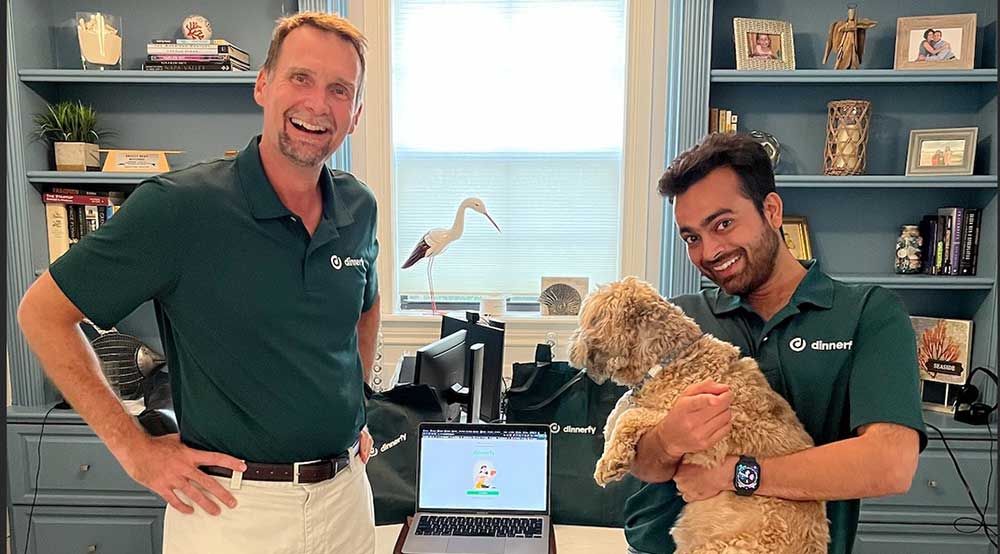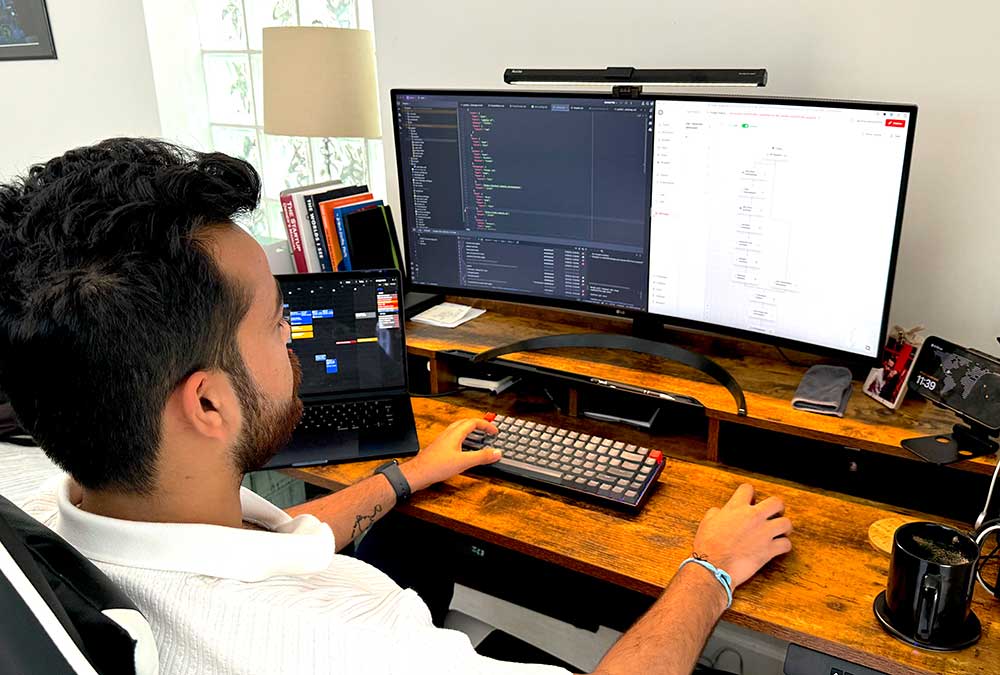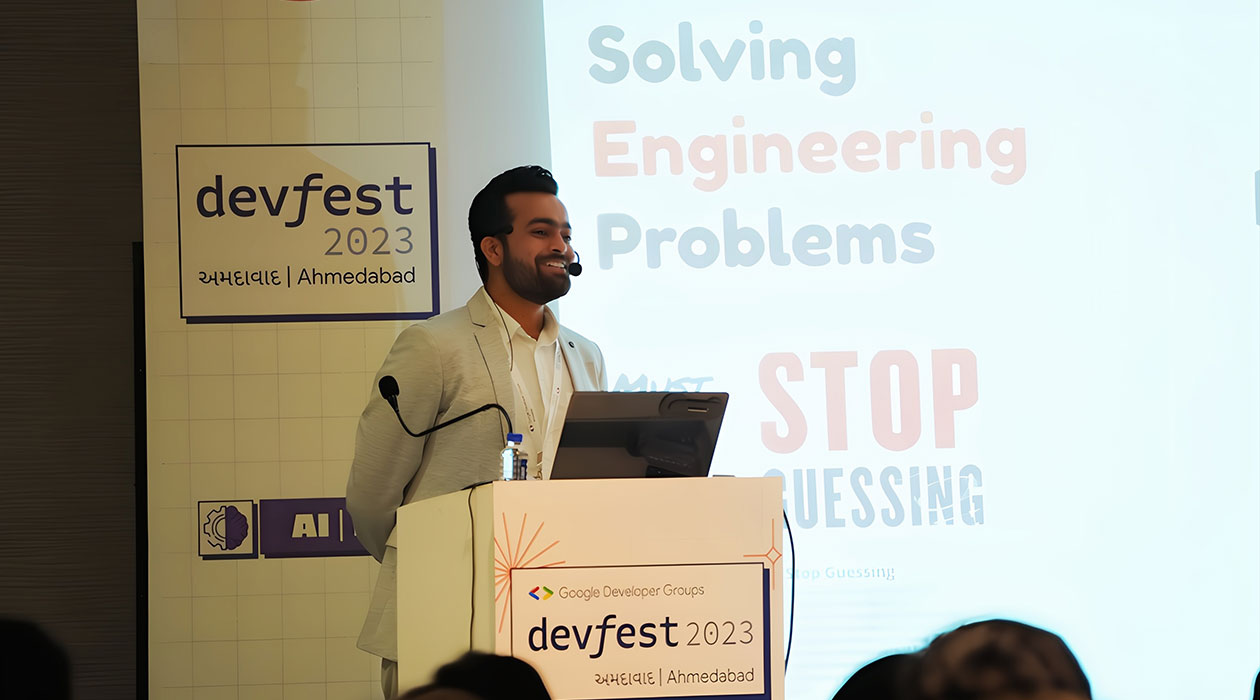In the fast-paced world of AI, staying ahead requires innovation and a deep understanding of the challenges developers and businesses face. Today, we speak with Aman Sharma, the founder of Lamatic.ai. His platform is changing the way GenAI apps are developed, tested, and deployed.
Sharma’s journey began in a small village in India and has taken him to the forefront of the tech industry. His story is one of persistence, innovation, and risk-taking. While pursuing his CS degree, he founded the Web Studio Atlancey, where he developed over 20 digital products and earned several Government accolades.
He later became a founding engineer at the hotel AI company Upsell.ai. This experience led him to work as an ML researcher at TU Vienna Informatics, where he focused on ML and recommender systems. Afterwards, Sharma joined Twimbit as CTO. There, he built and scaled their SaaS offerings, playing a key role in the company’s significant growth.
Now, as the CTO and co-founder of Lamatic.ai, Sharma also advises early-stage startups. In this interview, he shares the story behind Lamatic.ai and the challenges of building a startup in a competitive field. He also offers valuable advice to aspiring entrepreneurs.
What’s your backstory, and how did you come up with the idea for Lamatic AI?
My journey into technology and entrepreneurship started in a small village in India, where I developed an early fascination with computers, despite having limited exposure. Growing up, financial challenges were a constant hurdle, but they also fueled my drive to learn and innovate.
I taught myself programming, which eventually led to founding my first startup, Atlancey, while I was still in college. My experience at Atlancey, along with my roles as a founding engineer at Upsell.ai and as the CTO of Twimbit—where I navigated the startup through significant growth and a successful acquisition— laid the foundation for my future endeavours.
The idea for Lamatic AI emerged from my firsthand experiences in building AI products. After exiting Twimbit, I spent some time exploring new ideas, which led me to meet my cofounder, Charles Whiteman. Together, we began working on a meal-planning app called Dinnerfy.

While building Dinnerfy, I realized there was a significant gap in the market for a platform that could streamline the development, testing, and deployment of GenAI apps. Many developers and businesses were struggling with the complexities of AI development, and I saw an opportunity to create a solution that could simplify this process.
Thus, Lamatic AI was born – a platform designed to revolutionize how GenAI apps are developed and deployed, featuring collaborative visual workflows and modular AI components.
How did you create Lamatic AI?
Creating Lamatic AI was a challenging yet rewarding process. I utilized a range of tools and technologies, drawing on my previous experiences to design a platform that specifically addressed the pain points I had encountered in AI development. The product development process was customer-led and involved a lot of trial and error, particularly in ensuring that the platform was both powerful and user-friendly. I collaborated closely with a small, dedicated team to iterate on the platform’s features, ensuring that it met the needs of developers and businesses.
One of the major challenges we faced was integrating collaborative visual workflows with modular AI components in a way that was seamless and intuitive. We also had to ensure that the platform could handle the demands of rapid development and edge deployment. This process required several months of intensive development, testing, and refinement.
How did you launch the business?
Launching Lamatic AI required a strategic approach, especially given the competitive nature of the AI industry. We initially focused on a private beta, selectively onboarding projects to refine the platform based on real-world feedback. This approach allowed us to build strong relationships with early users and iterate quickly on their feedback.
For marketing, we used a combination of content marketing, targeted outreach, and networking within the AI and developer communities. We also utilized social media channels like LinkedIn to share our journey and engage with potential users.
We prioritized community engagement, and word-of-mouth proved to be highly effective. It took a few months to start gaining significant traction, but once we did, the platform’s unique value proposition resonated well with our target audience.
How are you doing today and what does the future look like?
Today, Lamatic AI is growing steadily, thanks to the strong foundation we built during our private beta phase. We are currently focusing on increasing our Monthly Recurring Revenue (MRR) and expanding our user base. Our growth strategies involve continuing to refine the platform based on user feedback, exploring partnerships, and expanding our marketing efforts.
Looking ahead, the future for Lamatic AI is bright. We plan to further enhance the platform’s capabilities, introduce new features that will allow even more seamless AI development and deployment, and scale our operations. Additionally, we are exploring opportunities in new markets and industries where our platform can add significant value.
What advice would you give to aspiring entrepreneurs who are just starting out?
To aspiring entrepreneurs, my advice is that persistence is key. The journey of building a startup is filled with challenges and uncertainties, but those who remain persistent and adaptable are the ones who succeed.
One of the most surprising lessons I’ve learned while running Lamatic AI is the importance of embracing risk. Leaving a secure position to pursue something uncertain was one of the biggest risks I’ve taken, but it turned out to be one of the most rewarding decisions.
It’s also crucial to focus on solving real problems and to stay close to your users. Their feedback is invaluable, and their needs should guide your product development.
Lastly, don’t be afraid to iterate and pivot when necessary. The ability to adapt to changing circumstances and learn from failures is what will ultimately drive your success.

Learn more about Lamatic AI and Aman Sharma


